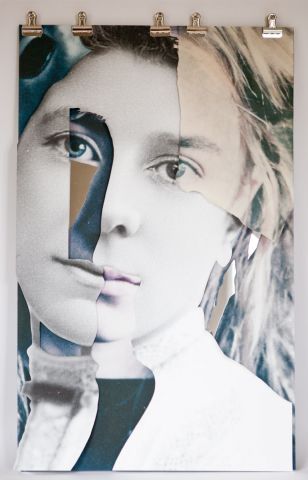I’ve just shown In the shadow of her gaze n.02 in S.I.T.E. at Chelsea College of Art. Each time I install this piece it changes slightly — it must because it’s assembled afresh each time working instinctively rather than to a plan. This install sees the metal rods placed close together for an intensity and level of aggression similar to the recent Shift install but with an absence of dramatic lighting. I think there is more scope to explore this potential of lighting the piece.
I spent a concentrated hour photographing the installation, and found it interesting how the piece presents regimented order from the front but a more chaotic perspective glimpsed to the side. I compromised for my lack of tripod using a chair to stabilise the camera, shooting as usual in RAW to capture as much data as possible. However, this time, on the advice of a camera-savvy expert, I keep the ISO to 100 and make better use of RAW Photoshop functionality to enhance the resulting photographs — tone curve to lighten the results, detail to sharpen the image and smooth out noise, contrast to make the image pop, and colour balance to slightly increase blue/white tones of the image. The results are a definite step forward but I can see a tripod is essential for future work to eliminate camera shake — issues are less on close-up shots but of far greater impact on wide shots — more kit to carry! However, I love the new images I’ve got that show rods and collages stretching dramatically across the picture plane. I think a mix of distance and detail shots produces a sense of the piece that better reflects how it appears in reality, improving on my previous documentation. Handy because I’ve been short-listed for Future Map 13 so need some good images for my final application!
Links:
http://clairemanning.co.uk/z_in_the%20_shadow_inst…
http://blogs.arts.ac.uk/camberwell/2013/12/12/site…







